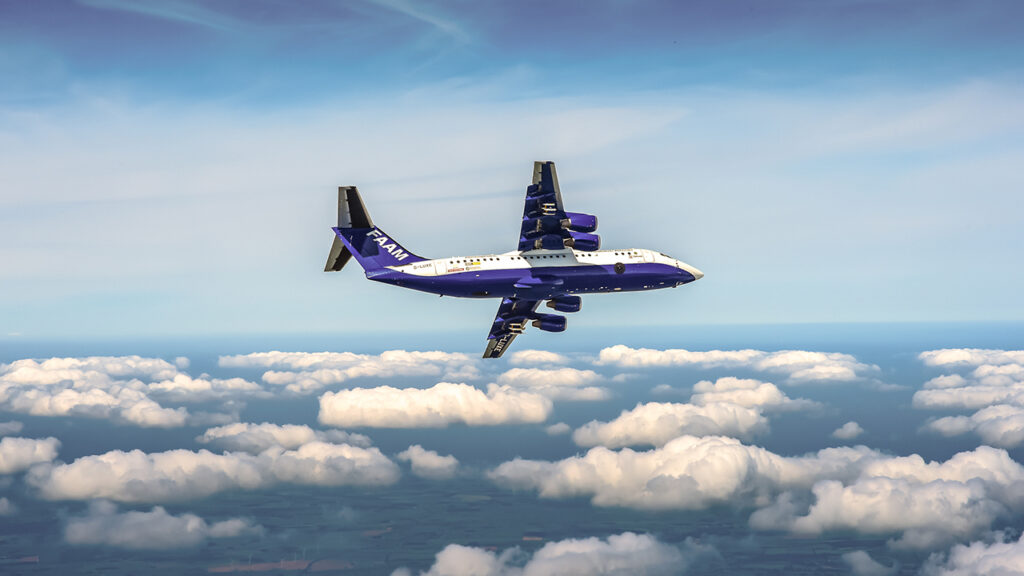
Research aircraft measures climate-important NOx emissions from commercial flights
Researchers from the National Centre of Atmospheric Science and the University of Cambridge are taking the FAAM Airborne Laboratory’s atmospheric research aircraft into flight corridors above the UK to measure emissions of nitrogen oxides (NOx) from commercial aircraft.
NOx is a product of fuel combustion, and most commonly known as an air pollutant in urban areas emitted by vehicles. But the REVEAL-NOx project team are trying to find out if commercial aircraft are a significant source of NOx, and when emitted at altitude, what effect NOx emissions have on global climate change.
“Similar to driving a petrol car, flying airplanes causes the production of emissions of air pollutants – in particular NOx”, says Professor Alex Archibald, who leads the REVEAL-NOx project from the University of Cambridge. “NOx is bad for human health but can also lead to the formation of ozone and impact the levels of methane in the air – both of which are powerful greenhouse gases.”
Research flights in June are the first part of a broader effort to characterise the impacts of NOx on the climate. Data gathered from the flights will be used to improve the accuracy of climate models, helping scientists make more precise predictions about the state of our climate in 10, 20 or 50 years from now – and what effects emissions regulations and climate policies could have.
“The chain of events from emissions of NOx to impacts on climate are complex and uncertain,” explains Professor Archibald. “Are these aviation NOx emissions responsible for a lot or a little warming or cooling? In this project we aim to constrain the uncertainty we have on these climate impacts by constraining the performance of models in representing the chemical cascades from aviation NOx emissions. A key part of this is making new measurements of NOx from aircraft using the FAAM Airborne Laboratory.”
The research aircraft will make measurements around 35,000 feet up in the air, in flight corridors over the UK. The researchers aim to not only measure within the corridor but upwind and downwind as well, giving a better picture of the overall dispersal of aircraft emissions.
Acknowledgements:
The REducing aViation Emissions’ uncertAin cLimate impacts: NOx (REVEAL-NOx) project is funded by the Natural Environment Research Council.
The FAAM Airborne Laboratory’s research aircraft is owned by UK Research and Innovation and the Natural Environmental Research Council. It is managed through the National Centre for Atmospheric Science, and leased through the University of Leeds.
The aircraft is supported, modified and upgraded by BAE Systems, operated by Airtask Group, and maintained by Avalon Aero. It is hangared in Bedfordshire, with Cranfield Airport at Cranfield University.
